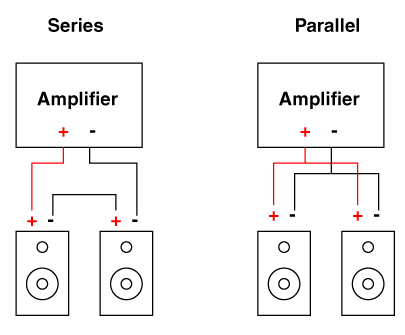

If the speakers’ impedance levels are too low for an amplifier, it can create distortion that worsens at higher volumes because of excessive current draw from the amp. This is the same as if you were using a hose with less pressure than its maximum and more draught – it won’t work well.Ī speaker’s impedance rating affects both input signal level and output, or volume. Speakers with mismatched impedances will not reach their optimal sound quality due to power losses in transmission. Why is this speaker impedance important for speakers? This analogy also applies to speakers because turning up the volume increases power consumption and reduces sound quality. Imagine a water hose the water flow will be reduced when the pressure is turned on lower than its maximum (the “impedance”). A typical home speaker will have an impedance of 4 to 8 ohms (or multiples thereof). The lower the impedance, the more power it takes for adequate volume levels and vice versa. A lower impedance rating means less power will be lost in transmission, but this can also mean more amplifier power is needed for adequate volume levels.Ī speaker’s impedance rating ranges from less than one ohm to thousands of kilohms. Impedance is a speaker or other component’s resistance to an electric current when connected across its terminals. This blog post will explain everything you need to know about these two types of speakers, including their differences and why impedance matters. 8-ohm speakers? This is one of those questions that get asked a lot.

The rating is a shorthand that's mostly concerned with a speaker's lower impedances.What’s the difference between 4-ohm vs. Look at the graph one more time and you'll see this 6 ohm rated speaker is rarely 6 ohms. This speaker's impedance is rated at 6 ohms, but when you look at the graph you'll see the speaker's impedance peaks at 47 ohms at approximately 25 Hertz, plummets to 5 ohms at 200 Hertz, rockets up to 35 ohms at 2 kHz, falls to around 9 ohms at approximately 7 kHz and so on. Look at the impedance graph ELAC speaker designer Andrew Jones provided for this article. Most speakers are rated at 4, 6 or 8 ohms, and cheaper receivers can sometime have issues driving low-impedance (namely 4 ohm) speakers.īut that rating is just a baseline. The lower the impedance, the more efficiently it allows the electric signal, which is basically the music, to pass through the speaker. It's all over the place.Īll speakers have an impedance rating in ohms, which represents how difficult the speaker is to power. Sometimes an 8 ohm speaker might be 7 ohms, or at times 29 ohms, or even 44 ohms. Far from it, an 8 ohm rated speaker is actually 8 ohms only a small percentage of the time because the speaker's impedance varies, depending on the frequencies the speaker is playing at any given moment. I wouldn't blame you if you assumed an 8 ohm speaker is always 8 ohms, but it's not.


 0 kommentar(er)
0 kommentar(er)
